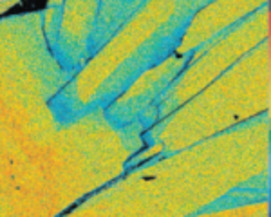Constructing the Pressure–Temperature Path of Ultrahigh-Pressure Rocks
Coesite and diamond in metamorphic rocks point to their very deep burial, but these minerals do not allow a precise derivation of metamorphic pressure–temperature (P–T) conditions at ultrahigh pressure (UHP). Thermodynamic calculations of mineral equilibria can accomplish this task when it is possible to assign mineral compositions to a former UHP equilibrium state. Pressure–temperature pseudosections are superior, because they often permit the construction of P–T paths to and from UHP conditions only on the basis of chemically zoned minerals such as garnet and phengite. The examples of a metapelite from Oman and an eclogite from the Erzgebirge, Germany, illustrate this method, but also demonstrate its limits. The derived paths are the basis for further geodynamic modeling and insight into tectonic processes.
Constructing the Pressure–Temperature Path of Ultrahigh-Pressure Rocks Read More »


